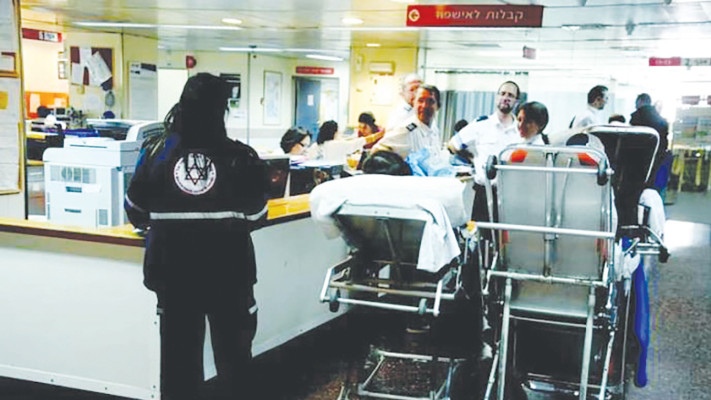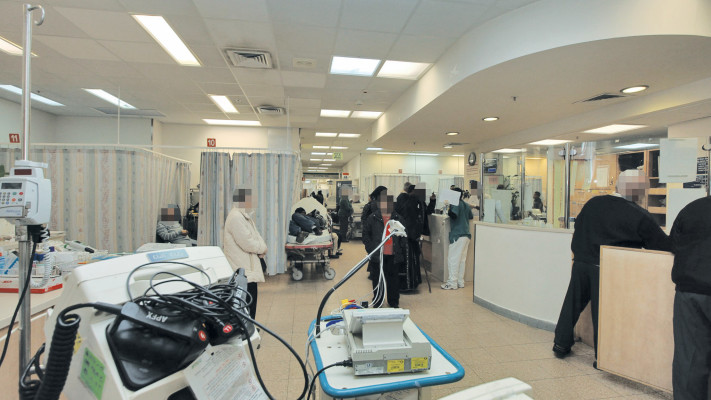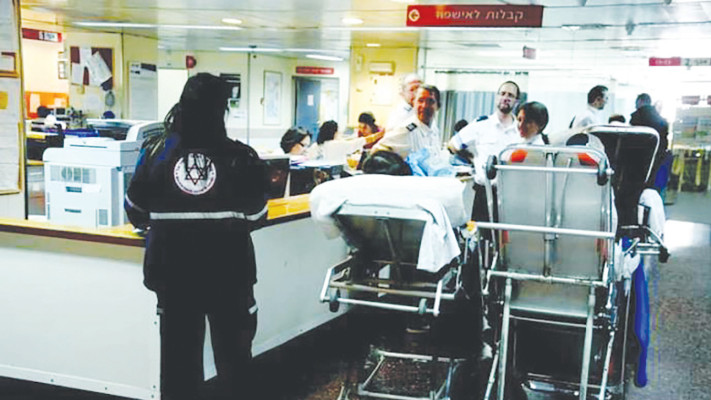The plight of hospitalizations in Israel: Today (Thursday) the Ministry of Health publishes the report of the internal departments which once again reveals the high density and lack of manpower that lead to too rapid discharges from hospitalization, and the return of a large part of the hospitalized to re-hospitalization.
Facial recognition system: this is how Israel tries to locate abductees and terrorists in Gaza
This is what the ceremony of lighting the torches will look like; Regev: "It is important to have a video of the Prime Minister"
The report presents the characteristics of hospitalizations in the internal departments between the years 2010 and 2022, from the report it appears that the rate of hospitalizations in Israel over the years has decreased by about 3%, apparently a product of the improvement of medicine in the community, the establishment of a system of home hospitalizations, and day hospitalizations that allow chronic patients to get treatments and return to their home. Most of those hospitalized in the internal wards are elderly: 65% of those hospitalized were 65 years old or older. This is an increase in the age of those hospitalized in the last decade.

The average number of hospitalization days is three days: this is a financial "roof" allocated by the health insurance funds to the hospitals, based on the assumption that most of the tests and worsening of the condition occur in the first few days. For each longer hospitalization, the funds pay the hospitals less, and therefore the hospitals, for their part, rush to release the hospitalized – and sometimes earlier than necessary. The report further reveals that the percentage of short-term hospitalizations, up to one day, of the total hospitalizations, increased to 30% in 2022, compared to 26% in 2010. Evidence that many hospitalized patients are discharged earlier than required can be found in the report: about 20 % of those hospitalized are re-hospitalized within a month.
The highest rate of hospitalizations was recorded in the peripheral areas in the north and south of the country, while in the Tel Aviv and Jerusalem districts the lowest rate of hospitalizations in the country. The reasons for this, according to senior officials in the medical system with whom we spoke, are probably a higher socioeconomic population that is more aware of its health and therefore requires less hospitalization, and a higher investment in preventive medicine and medical services in the community in the central region and Jerusalem, which lead to less deterioration and enable more treatments in the community or at the patient's home.
"The report reveals many daily hardships in the internal medicine wards," says Prof. Avishai Ellis, chairman of the Israel Internal Medicine Association, in response, "Since the end of 2010, only 320 beds have been added to the wards, while in these years the country's population has grown by about 2 million people and is aging. It turns out that the annual average load in the internal departments is about 100% per year. This figure alone indicates the severe crisis we are in and the loads all year round. The internal departments suffer not only from a shortage of space, but from a shortage of specialists and specialists."

"I am aware of the difficulties and complex challenges faced by the internal hospitalization system," said Minister of Health Uriel Bosso, "We are working to implement a multi-year plan that includes improving infrastructure, adding medical personnel and a NIS 90 million per year incentive model to improve quality and service in the internal departments. We are working to promote against The Ministry of Finance in the future doctors' agreement will strengthen young specialists and an administrative reserve in all internal departments as well."
"The internal wards are one of the main pillars in the treatment of patients in the health system," added the director general of the ministry Moshe Bar Siman Tov, "the load was felt especially in the winter of this year in the shadow of the war, the many wounded and the delays in vaccination due to this. In order to reduce the load, the ministry is taking various steps, including the expansion of in-house hospitalizations, changing the timing mechanisms, adding beds for internal medicine and strengthening the specialists."






